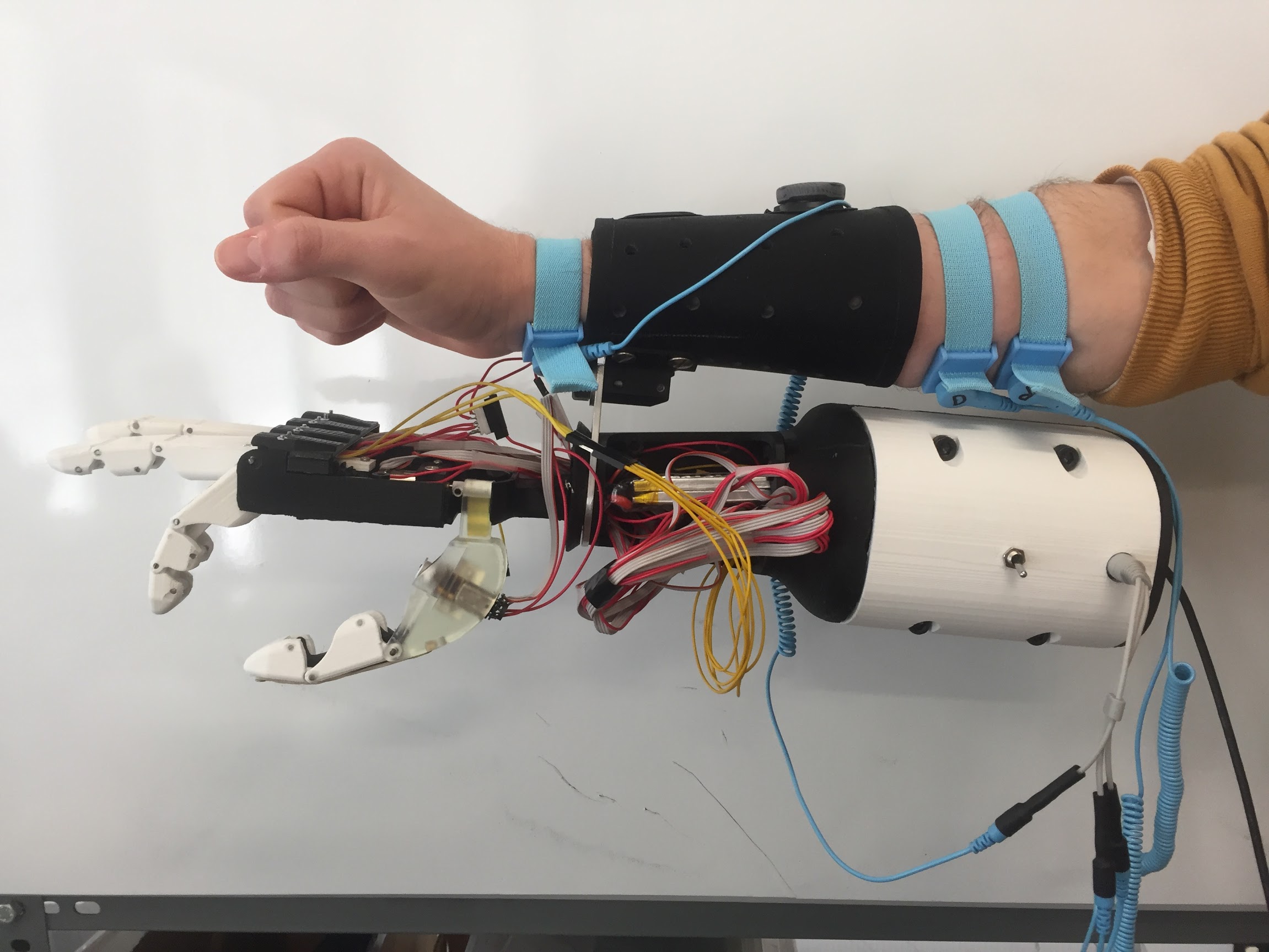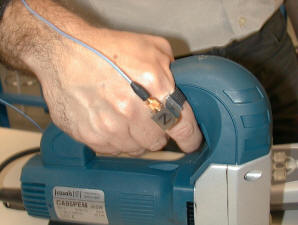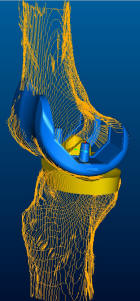|
English |
Biomechanics of the human hand
The objective of this research is the highest
knowledge of the biomechanics of the human hand. This line of
research began with the development of the doctoral thesis of Ximo
Sancho (2001): "Biomechanical Model of the human hand with
application to the design of hand tools." The work of this thesis
led to the development of a scalable three-dimensional model of the
hand that covers all its degrees of freedom. Although the model was
developed for application to the ergonomic design of tools, it was
later also used in the study of several medical problems of the
hand. Different projects in this research line have analysed the biomechanics of human grasping in everyday activities
of both healthy and pathological subjects, for application to
rehabilitation or design of adapted products.
|
 |
Artificial hands
The objective of this research line is the design of
artificial hands for prosthetic or robotic use. The aim is to apply
the knowledge about biomechanics of the human hand to the design of artificial
hands and to the development of methods for
evaluating their functionality and performance. Different projects
have been developed with public funding, such as
DEVALHAND,
BENCH-HAND,
UNIQUE-HAND, among others. |

|
Dental Biomechanics
The objective of this research area is the
biomechanical analysis of dental structures and dental restorative
systems such as endodontic posts or implants, to optimize its
design. This will work with a dual methodology: simulation using
virtual finite element models of the system and testing 'in
vitro' with static and fatigue testing machines. The group has
developed a broad research in this area over the past 10 years in
different projects (PILARES,
OPTIPERN), with a
large number of publications and the design and manufacture of a
fatigue testing machine for dental components. |
 |
Emotional design
This line of research aims to develop, improve and implement
methodologies for emotional design and to integrate them into an
overall methodology of user-centered design. In today's market,
consumers will not only value price, functionality, usability and
product safety (aspects related to ergonomics) but also values the
emotions and feelings that products provide. Consequently, in an
increasingly competitive market, a good product should meet all
expectations of the consumer, but especially to produce a positive
emotional response. The emotional design methodologies, allow to
capture the emotional needs of users and to establish relationships
between them and the characteristics of the product, so that the
design can incorporate the features that best reflect the emotions
intended. In a first project (HERR-KANS)
the methodologies for emotional design were set-up for the design of
hand held tools. |

|
Ergonomics of hand tools
This one was the first research line of the
group, started in 1995. Its objective is a sound knowledge of the
ergonomics of grasping in hand held tools, both hand operated and
powered tools, with the final objective of improving its design. In
two projects of this line (ERGOHERR
and PRECIMOD) the
grasping process was analyzed for hand operated tools and the
methodology for ergonomic assessment was established. In a later
project (HERRMOT) the
same question was studied for powered tools. |
 |
Knee biomechanics
The objective of this line of research is the
study of knee biomechanics using simulation models.
The group has worked in this area in two projects
(SIMROD) with the final
objective of having a model with application to the optimal design
of knee prosthesis. There is in progress a doctoral thesis with the
objective of developing a stable version of this model, allowing to
compare different prosthesis models in several day life activities,
as level walking or stairs ascent.
|
 |
Foot biomechanics
This is the last research line undertaken by the
research group, associated to the development of the doctoral thesis of
the podiatrist Enrique Sanchis Sales. The aim of this thesis is the
analysis of the dynamic stiffness of foot joints during normal gait,
and how foot joint dynamic stiffness is affected by the foot posture
index (pronation-supination indicator).
|
 |
|